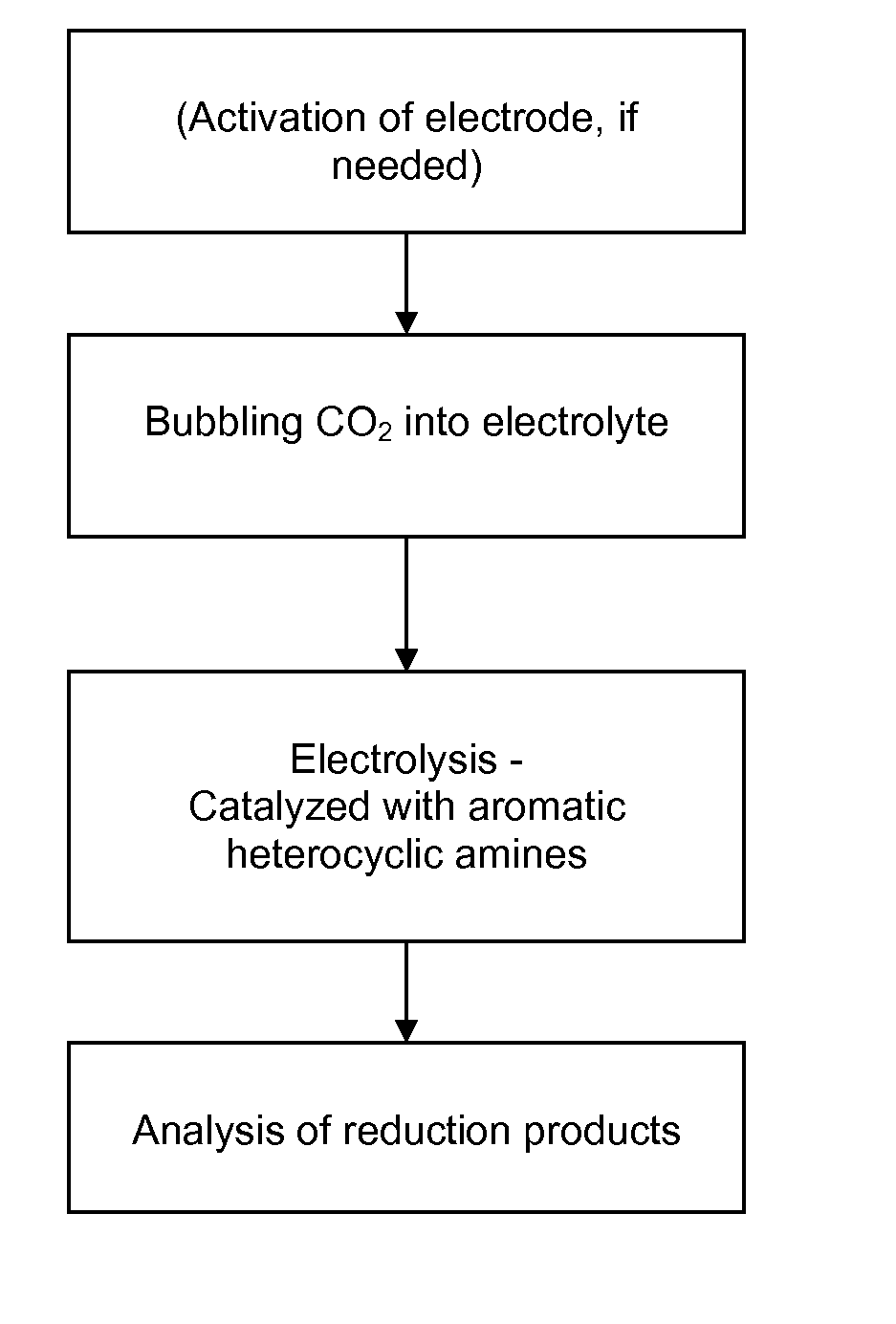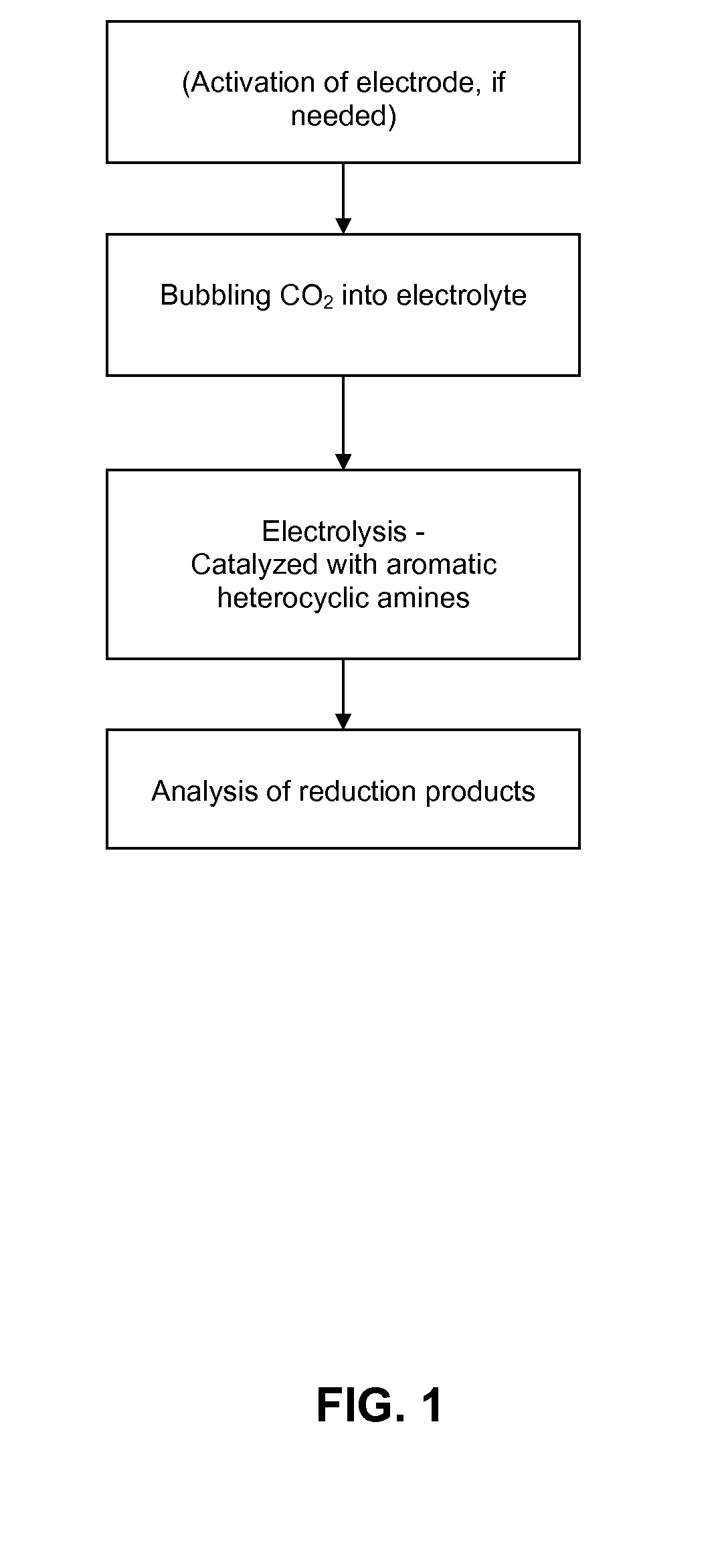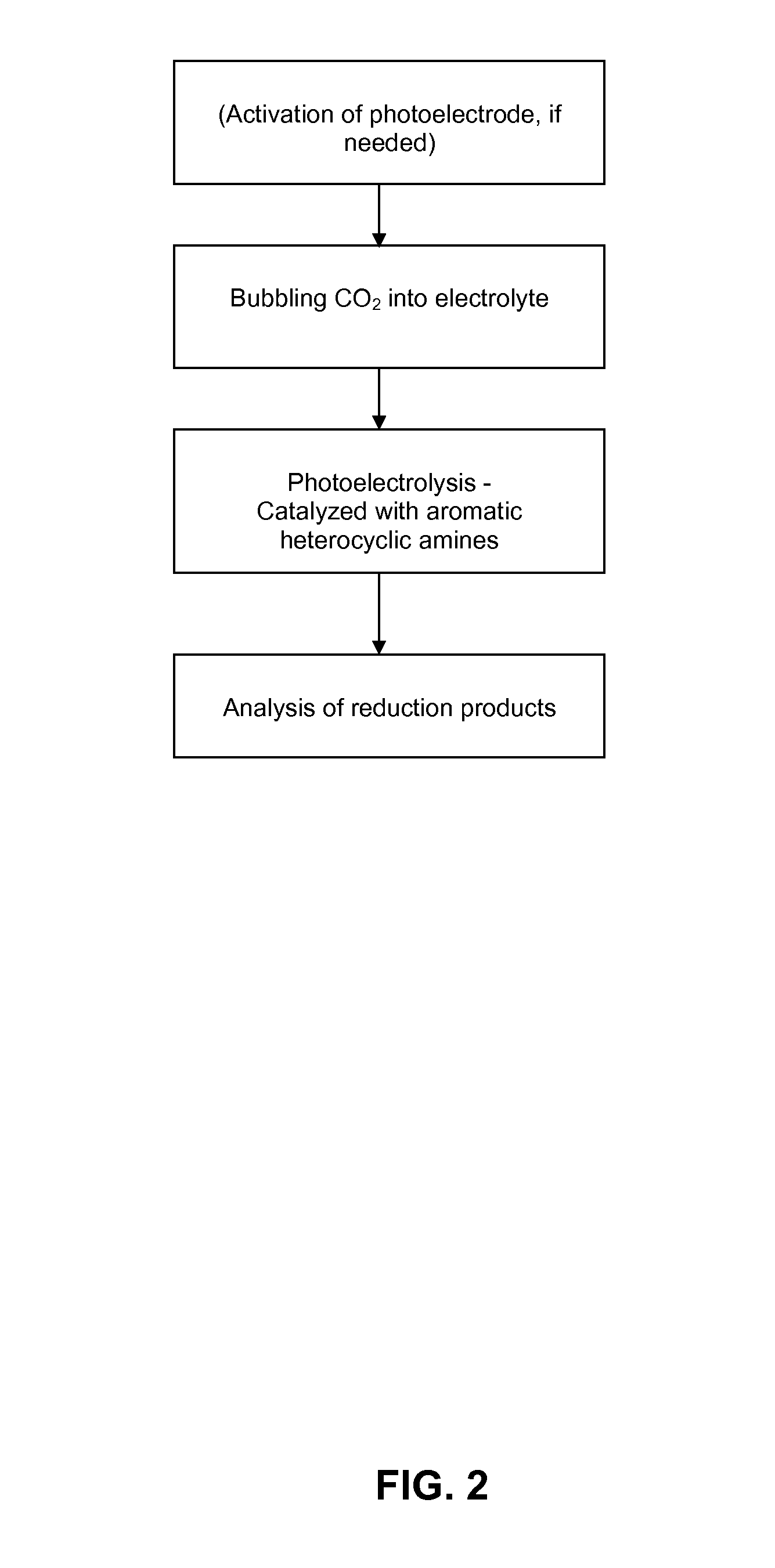Conversion of carbon dioxide to organic products
a carbon dioxide and organic technology, applied in the field of electrocatalytic systems, can solve the problems of significant challenges in the field of carbon dioxide conversion to organic products, legal and regulatory issues, and the inability to meet the needs of organic products, so as to reduce carbon dioxide, reduce organic products, and reduce products.
- Summary
- Abstract
- Description
- Claims
- Application Information
AI Technical Summary
Benefits of technology
Problems solved by technology
Method used
Image
Examples
example 1
General Electrochemical Methods
[0049]Chemicals and materials. All chemicals used were >98% purity and used as received from the vendor (e.g., Aldrich), without further purification. Either deionized or high purity water (Nanopure, Barnstead) was used to prepare the aqueous electrolyte solutions.
[0050]Electrochemical system. The electrochemical system was composed of a standard two-compartment electrolysis cell to separate the anode and cathode reactions. The compartments were separated by a porous glass frit or other ion conducting bridge. 0.5 M KCl (EMD >99%) was used as the supporting electrolyte. A concentration of the desired aromatic heterocyclic amine, such as pyridine, pyridine derivative, imidazole, imidazole derivative, of between about 1 mM to 1M was used.
[0051]The working electrode consisted of a known area Pt foil connected to a Pt wire (both Aldrich) or a Pd foil (Johnson Matthey). Pd electrodes were hydrogenated at a current density of 15 mA cm−2 in 1 M H2SO4 until ˜73...
example 2
General Photoelectrochemical Methods
[0052]Chemicals and materials. All chemicals used in this work were analytical grade or higher. Either deionized or high purity water (Nanopure, Barnstead) was used to prepare aqueous electrolyte solutions.
[0053]Photoelectrochemical system. The photoelectrochemical system was composed of a Pyrex three-necked flask containing 0.5 M KCl as supporting electrolyte and a 1 mM-1M catalyst, e.g., 10 mM pyridine or pyridine derivative. The photocathode was a single crystal p-type semiconductor, which was etched for ˜1-2 min in a bath of concentrated HNO3:HCl, 2:1 v / v prior to use. An ohmic contact was made to the back of the freshly etched crystal using an indium / zinc (2 wt. % Zn) solder. It was then connected to an external lead with conducting silver epoxy (Epoxy Technology H31), that was covered in glass tubing, and insulated using an epoxy cement (Loctite 0151 Hysol) to expose only the front face of the semiconductor to solution. All potentials were r...
example 3
Analysis of Products of Electrolysis
[0055]Electrochemical experiments were performed using a PAR 173 potentiostat-galvanostat together with a PAR 379 digital coulometer, a PAR 273 potentiostat-galvanostat, or a DLK-60 electrochemical analyzer. Electrolyses were run under potentiostatic conditions from ˜6-30 hrs until a relatively similar amount of charge was passed for each run.
[0056]Gas Chromatography. The electrolysis samples were analyzed using a gas chromatograph (HP 5890 GC) equipped with an FID detector. Removal of the supporting electrolyte salt was first achieved with Amberlite IRN-150 ion exchange resin (cleaned prior to use to ensure no organic artifacts by stirring in a 0.1% v / v aqueous solution of Triton X-100, reduced (Aldrich), filtered and rinsed with a copious amount of water, and vacuum dried below the maximum temperature of the resin (˜60° C.) before the sample was directly injected into the GC which housed a DB-Wax column (Agilent Technologies, 60 m, 1 μm film thi...
PUM
| Property | Measurement | Unit |
|---|---|---|
| Volume | aaaaa | aaaaa |
| Volume | aaaaa | aaaaa |
| Volume | aaaaa | aaaaa |
Abstract
Description
Claims
Application Information
 Login to View More
Login to View More - R&D
- Intellectual Property
- Life Sciences
- Materials
- Tech Scout
- Unparalleled Data Quality
- Higher Quality Content
- 60% Fewer Hallucinations
Browse by: Latest US Patents, China's latest patents, Technical Efficacy Thesaurus, Application Domain, Technology Topic, Popular Technical Reports.
© 2025 PatSnap. All rights reserved.Legal|Privacy policy|Modern Slavery Act Transparency Statement|Sitemap|About US| Contact US: help@patsnap.com



